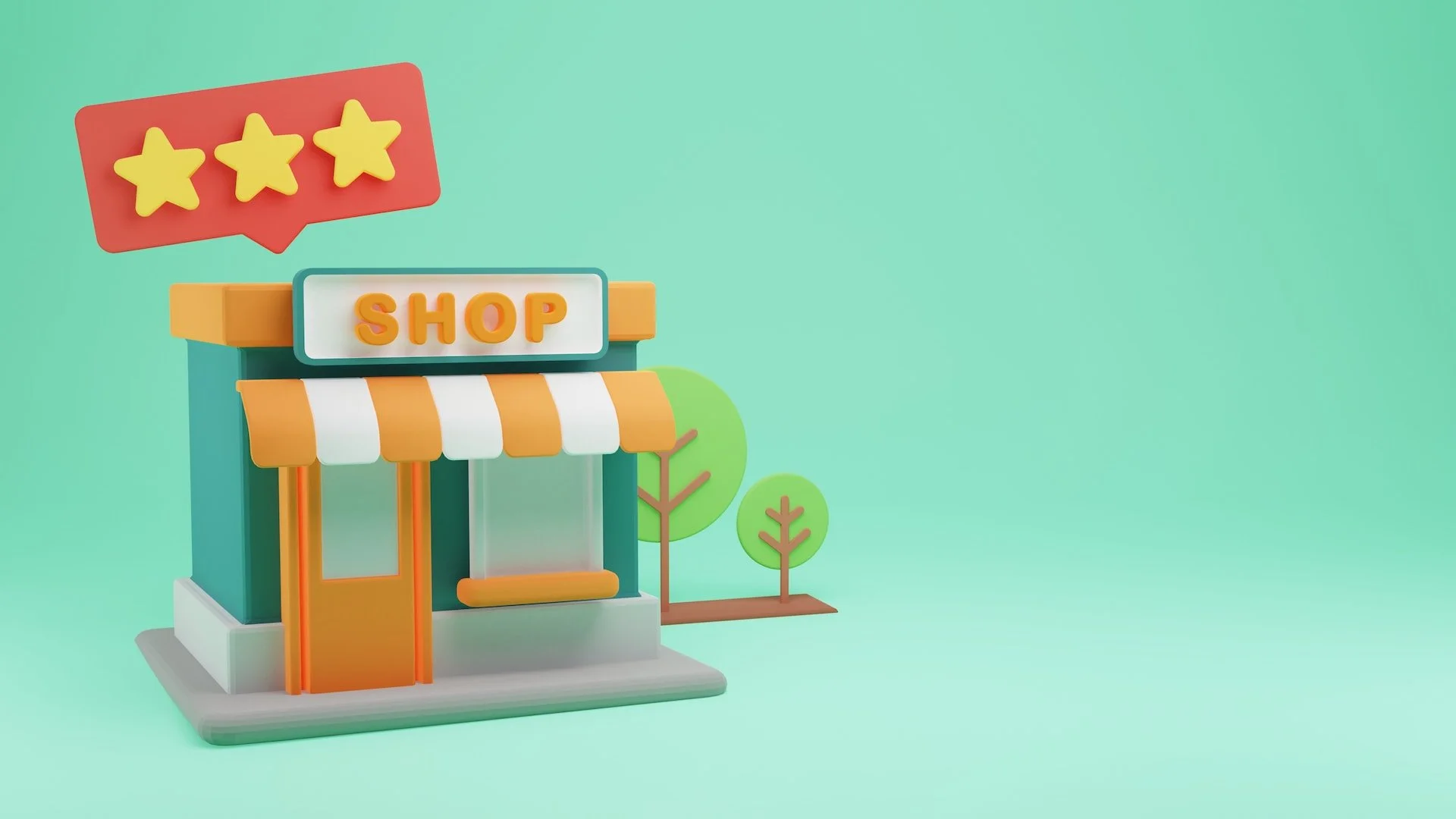12 essentials for every local business website’s homepage
Your website’s homepage is an online shop window to your local business, so making sure it reflects your brand values and provides visitors with a great user experience should be at the top of your priorities. But what should a your local business include in your website’s homepage?
Today, we’re sharing 12 must-haves that every local business’ homepage needs! From including calls to action, to crafting an attractive visual display, these elements work together to attract customers and keep them engaged. And although not everyone arrives by the home page, the homepage is nearly always checked out as the second or third page on a visit.
Keep reading for pointers on how you can make sure your homepage has everything it needs to succeed - both now and into the future.
What should my local business’ website homepage include?
Headline
Sub-headline
Social proof
Call to action
Contact information
Use visuals images and video
Lead generation
Secondary calls to action
Key features and the problems you solve
Success stories and awards
Resource section
Full mobile optimisation
1. Captivate visitors in seconds with a clear value proposition
In just three seconds, your website has the crucial task of conveying what your business offers to visitors. And that's where your headline or value proposition comes into play. Despite its brevity, your headline holds immense power as one of the most impactful pieces of copy on your website. It should be prominently displayed at the top of your local business website homepage.
Why? Because it's through your headline that you demonstrate to any visitor, whether a first-timer or a loyal customer, that you fully grasp the problem they're seeking to resolve and that you possess the solution.
Given the diverse range of potential website visitors, it's a challenge to find a few words that resonate with each one of them. Instead, focus your headline on targeting a specific third of your audience, the group most likely to genuinely appreciate and benefit from your product or service. By doing so, you'll captivate and engage the right people, increasing your chances of converting them into satisfied customers.
2. Stand out with a clear sub-headline.
A subheading is a mini-headline or text that is found under the main headline to give further insight or support for the headline. Make sure to capture attention with a concise summary of what you do or offer, and try to focus on solving a common problem for your clients with your product or service. You can also gain trust and credibility by showcasing social proof that supports your promise.
3. Harness the power of social proof to boost trust
You may have the best product or service in the world, but without social proof, potential customers may not believe you. That's where testimonials and reviews come in.
Display a selection of your top quotes on your homepage to showcase the positive experiences of others. For added credibility, include the name and photo of the person providing the testimonial.
Just like walking into an empty restaurant can make you question its quality, an empty website can raise doubts about your business. Showcasing reviews and testimonials on your homepage reinforces trust and demonstrates that many others have achieved great results through your business.
Make sure your reviews and testimonials are prominently featured on your homepage to highlight the positive experiences of your customers.
4. A clear call to action
Maximise the impact of your website homepage with compelling calls-to-action (CTAs). Guide visitors through the buying cycle by strategically placing two to three visually striking CTAs above the fold. Make them easy to find! Keep the copy concise, choosing action-oriented phrases of no more than five words. Spark immediate interest with CTAs such as "Sign up," "Make an appointment," or "Try it for free."
5. Make your contact information easily accessible.
Ever been frustrated trying to find a phone number or address on a website homepage? Don't let this happen to your customers. Your website should be designed to encourage people to reach out to you!
Add a personal touch to your contact information to give prospects a warm, friendly impression of you and your team before they even speak to you.
6. Use visuals
Try not to bore your website visitors with long paragraphs of text. Instead, catch their attention with captivating images and videos that clearly showcase what you have to offer. Visuals should be a key component of your website, including both still images and videos. Research shows that two-thirds of people prefer learning about new products or services through video.
By incorporating a variety of visuals on your small business website homepage, you can effectively convey your message beyond just words on a page. Don't forget to optimise your images by adding alt text. This not only makes them more accessible to visitors using screen readers but also boosts your local SEO efforts.
By using visually appealing elements, you can break up the content and enhance the storytelling experience. As the saying goes, a picture is worth a thousand words!
7. Use compelling offers to generate leads
Not everyone will be ready to buy right away, so don’t waste an opportunity by inviting them to engage in a lower commitment way.
Get more leads from your homepage by showcasing an irresistible content offer. For example, downloading an ebook, guide, or white paper will provide valuable information to potential customers who may not be ready to make a purchase yet.
A special discount offer for people who sign up for a newsletter or access to a member area of an online store are just some examples of adding value to your customer’s journey with you.
By capturing their contact details you can start building an ongoing relationship with future prospects away from your business.
8. Boost conversions with secondary calls-to-action
Don't miss out on potential conversions from prospects who aren't ready for your primary objective. Enhance your homepage with secondary calls-to-action (or “CTAs”), offering an alternative path for visitors.
Examples of secondary CTAs could be signing up for the latest blog posts to be delivered to your inbox, following or sharing on social media, or information on new product launches.
Keep your primary CTAs above the fold, but don't forget about the valuable real estate below. By placing secondary CTAs below the fold, you give visitors even more options to engage with your brand as they scroll down.
Maximise your conversion potential by including secondary CTAs that capture the attention of visitors who aren't quite ready for a high-commitment action of the primary CTA.
9. List out your features
When it comes to understanding the value that your products and services provide, it's crucial to go beyond simply listing the benefits. You want to give people a clear and concise understanding of your key features. By clearly outlining the specific problems you solve and the core services you offer to tackle customer problems, visitors can quickly identify if your local business has a solution that will work for them.
Not only does this provide valuable information, but it also enhances the chances of your website homepage ranking on search for terms related to your services. So make sure to dive deeper into the types of problems you solve and the services you offer.
10. Go beyond features to to highlight the value of your solution
Pain points are specific challenges, issues or problems that customers face in their day to day life, such as inconvenience, inefficiency, or some other difficulty. When identifying your customer's pain points, you're identifying the trigger that's caused them to seek out your solution.
Understanding and articulating what's causing your customer’s pain and frustration can really help your customer to see the value of your solution, while motivating them to find out more.
11. Build clear audience signposting
Catering to multiple customer types is common for local businesses. Ensure your website provides clear navigation so that every audience can easily find the information relevant to them.
For instance, we provide local SEO services to a wide variety of businesses. To accommodate each, we’ve incorporated dedicated landing pages for each of our target audiences including local trade, hospitality, retail, professional services, health and wellness services, hair and beauty services, medical and healthcare practices, leisure and fitness businesses and marketing & design agencies. Each business sector we serve is clearly indicated in the homepage design, with a call to action to find out more.
A local plumbing or electrican business might include different pages dedicated to residential, commercial and building trade clients. A local restaurant could incorporate pages dedicated to private parties, couples and even business diners. A local website design agency might include dedicated pages for each of their target audiences alongside relevant case studies and testimonials.
Whatever your business, if you’re targeting a very specific type (or types) of local customer, make it easy for them to get to whatever content is most relevant to them.
12. Boost your business's credibility with success stories and awards
Impress your homepage visitors with your company's achievements. Whether you're a critically acclaimed Italian restaurant or the recipient of the best creative director award, showcase your accomplishments to inspire a great first impression.
Highlighting success stories and recognition will give your business the credibility it deserves, even to those who are unfamiliar with you.
Is 12 all you got?
Hell no, here’s a couple of bonus suggestions for your local business’ home page!
13. Be a helpful resource
Capture your website visitors’ attention and establish your credibility as a thought leader in your industry by offering a resource centre where they can find relevant information.
This not only keeps them engaged on your website, but also helps them learn more about your business, while positioning you as the helful expert in your chosed field of expertise.
Make it easy for them to access these resources by including a menu at the bottom of your page. This menu should feature a variety of content such as blog posts, podcast episodes, explainer videos, and links to your social media and contact information. This type of content builds on what is known as EEAT content. Read more about EEAT content here.
By placing this information at the bottom of your homepage, you ensure that it's easily accessible and avoids confusing or distractting your audience. Don't miss the opportunity to engage and provide value to your visitors who may not be ready to buy just yet.
14. Make sure it’s mobile-friendly!
With 92.1% of internet users accessing the internet through a mobile phone, and 64% of the combined data traffic worldwide comes from mobile devices, we can see that every day, more people access the internet or search for local businesses on their mobile devices.
If your website isn't mobile-friendly, you're missing out. A well-designed mobile site loads quickly and looks impressive. If a site takes more than three seconds to load, most users will give up. In addition, Google now values speed and mobile-friendliness when ranking websites.
So, if your site doesn't have responsive design and fast loading times, you risk frustrating customers and losing visibility in Google search results. To optimise your images for mobile users, use high-quality images with smaller file sizes.
Some parting thoughts from our founder and resident local business expert
From a family of small business owners, local marketing expert James understands more than most the unique challenges they face every day. He’s been advising local business owners and their agencies on digital marketing since 2000, and established our local SEO service in 2021.
“Your website homepage is often the first glimpse potential customers have of your business. It's crucial to showcase what you offer, why it matters to them, and how they can benefit from your products or services. Create a brilliant first impression with a homepage that incorporates the outlined elements above.
By following these simple rules to create a well-considered website homepage for your local business, you can stand out and make a brilliant first impression and win over new customers.”
Who are you and what is this?
This post is one of many aimed at helping to support owners, managers and franchisees with growing their local business. It's been lovingly researched and written by the expert team behind LocalMark, a London UK-based local SEO service that helps connect UK trade, service & retail businesses with nearby customers. If you found this helpful and could benefit from more of the same, be sure to share, follow us on social media (links below) and sign up for our newsletter.


